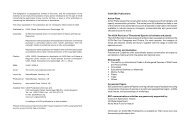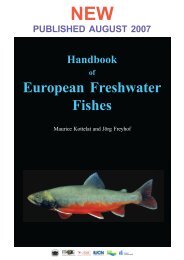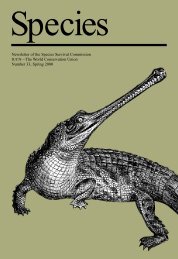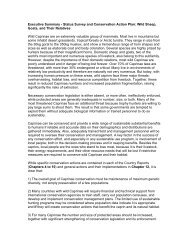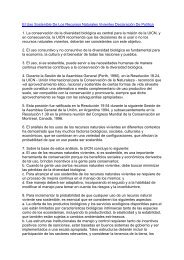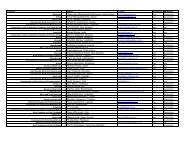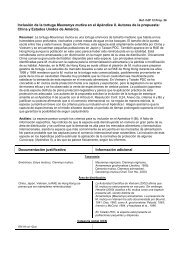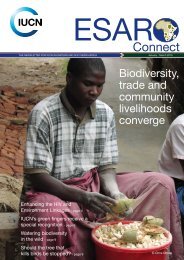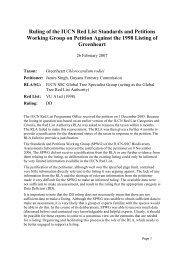Conflict resolution and leopard (Panthera pardus) conservation in a ...
Conflict resolution and leopard (Panthera pardus) conservation in a ...
Conflict resolution and leopard (Panthera pardus) conservation in a ...
You also want an ePaper? Increase the reach of your titles
YUMPU automatically turns print PDFs into web optimized ePapers that Google loves.
Sites where we carried out human <strong>leopard</strong> conflict related work (research <strong>and</strong><br />
capacity build<strong>in</strong>g of the Forest Department).<br />
Study area<br />
Our work has been carried out <strong>in</strong> the western regions of<br />
Maharashtra. However, our research work has focussed<br />
on Junnar (<strong>in</strong>tensive study was carried out <strong>in</strong> 2003) <strong>and</strong><br />
Nashik Forest Circle (where large number of <strong>leopard</strong>s<br />
are present <strong>in</strong> cropl<strong>and</strong>s). These are human dom<strong>in</strong>ated<br />
l<strong>and</strong>scapes where people live at densities greater than<br />
170 km-2. The Forest Department <strong>in</strong> these areas<br />
manage non-wildlife activities such as plantations, social<br />
forestry etc. Historically Junnar <strong>and</strong> Nashik regions used<br />
to support dry deciduous forests but numerous irrigation<br />
projects <strong>in</strong>itiated a few decades ago have converted the<br />
vegetation to lush cropl<strong>and</strong>s. Cash crops such as<br />
sugarcane, maize, fruit plantations <strong>and</strong> vegetables are<br />
grown. The area faces three dist<strong>in</strong>ct seasons – the<br />
monsoon between June <strong>and</strong> September where daytime<br />
temperature are about 20° C, w<strong>in</strong>ter between October<br />
<strong>and</strong> February where temperatures can decrease to about<br />
7° C <strong>in</strong> the night <strong>and</strong> day time temperatures are about<br />
15° C, the summer where day time temperatures can go<br />
up to 40° C.<br />
Methods<br />
Research project:<br />
1. Carried out <strong>in</strong> 2003, the study used Forest<br />
Department data on conflict <strong>in</strong>cidents, captures <strong>and</strong><br />
releases of <strong>leopard</strong>s, <strong>in</strong>formation from semi-structured<br />
<strong>in</strong>terviews with more than 500 affected people <strong>and</strong> GIS<br />
analysis to track changes <strong>in</strong> vegetation over the last<br />
three decades (Athreya et al. 2004).<br />
2. The management <strong>in</strong> Junnar responded to the large<br />
presence of <strong>leopard</strong>s <strong>in</strong> a human dom<strong>in</strong>ated habitat by<br />
carry<strong>in</strong>g out more than 100 captures <strong>and</strong> translocations<br />
of <strong>leopard</strong>s <strong>in</strong> 2 years. In 2003, we commenced <strong>in</strong>sert<strong>in</strong>g<br />
passive transponders <strong>in</strong>to all <strong>leopard</strong>s trapped <strong>in</strong> the<br />
Junnar Forest Division <strong>and</strong> Nashik Forest Circle for<br />
identify<strong>in</strong>g translocated <strong>leopard</strong>s <strong>in</strong> case of re-capture.<br />
A translocated <strong>leopard</strong>ess captured <strong>in</strong> cropl<strong>and</strong>s <strong>and</strong> released <strong>in</strong>to a<br />
Wildlife Sanctuary attacked a boy the day after her release. The<br />
boy’s father hit her on the head with a sickle. Her identity could be<br />
determ<strong>in</strong>ed by a microchip <strong>in</strong>serted <strong>in</strong> her as part of our project<br />
(Photo K. Mungale).



